|
TennisOne Lessons
Tactics - The Secret to Great Technique Wayne Elderton
Technique is the favorite topic of most people involved in tennis. Players talk about it (just listen to any post match conversation), coaches talk about it, parents, TV commentators, the list goes on. The majority of lessons people take emphasize technique. Just look at tennis videos, magazines, and websites and see what they talk about most? Technique seems to be the, ‘big fixation'.
A New World Order The Game-based approach (GBA) is a new trend in learning tennis that is gaining prominence world wide (see my July 15, 2004 TennisOne article). The premise for the GBA is simple: Tennis is a game. Every game needs to be played and playing is a tactical endeavor. In regards to technique, tennis is not figure skating. No judges are at the side saying, “Your follow-through was much better than your opponent's, 15-0 for you!” The Two Become One For many, technique and tactics are two distinct and separate categories. Nothing could be further from the truth. In today's world of biomechanical analysis and high-speed digital imaging, the tactical/technical connection gets lost all too often. This false separation causes players to spend thousands of dollars on technical lessons that don't improve their play much at all. If you ask a group of players at any park or club, “How many of you lose to opponent's who are technically worse than you?” almost everyone will raise their hand. Everybody can tell you about the latest techniques but few know how to play well. This shouldn't be the case.
The tactical/technical connection is simple. Technique is only a means to perform a tactic. Technical skill by itself is useless in a game if it is not used in the right way, at the right time and in the right location. The fact is, without tactics, good technical strokes are simply an exercise in looking stylish. Imagine a soccer player who kicks the ball with impeccable skill. His shot on net beat the goalie easily. Although he kicked with great technique, his team was furious. Why, under pressure he put the ball in his own net. Good technique, wrong tactic. This may be an extreme example yet in tennis, players execute really bad ideas with nice strokes all the time. Learning a stroke without a tactical intention is deficient. How many players have had a coach feed them baskets of balls to ‘groove' their approach shot and yet, never actually approached the net when they played a match? If the coach doesn't spend a lot of time integrating the skill into tactical play, the likelihood of the player using it in real match play is little to none. As an example, let's look at up and coming American James Blake. Look at his follow-through in the four photos at the beginning of this article. Remember, all are forehands, and in all of them he is on the baseline and is moving laterally. Which one is ‘proper'?
Let's now look at each of these forehands and see the tactics behind the technique. In the first clip (Fig. 1), James' follow-through is down and around his left hip. This would be considered ‘wrong' by many coaches. However, it is excellent technique when the tactic is a penetrating topspin crosscourt rally that will keep his opponent neutral. His follow-through was the natural result of his racquet accelerating upwards on the outside of the ball through impact with a full body rotation. Any other follow-through wouldn't have allowed his body and racquet to do what it needed to accomplish the tactic.
In the fourth clip (Fig. 4), the follow-through finishes extended in front of his face (this was actually the one I was taught growing up). It is the result of the racquet traveling along a very stable path forward and slightly upward through the impact (to time taking the opponent's power like one does on a half-volley). The tactic here is that James is trying to counter an opponent who has got him on the run. He is taking the ball's pace and directing it down the line. This may allow him to get the opponent running and turn the tables. He has further to recover than if he sent a crosscourt (you can see how fast he takes off to recover to the open court) however, if he gets the opponent running, it could be worth it (kids, don't try this at home). So which technique are you being taught? There is no such thing as a ‘basic' one that every one should learn since, even for a beginner, as soon as the situation changes, the technique must change as well. Every shot in tennis is like a move in chess. The player sees what's going on with the opponent, their location, and the ball received, decides what tactic to use, and applies situation specific technique. If the technique doesn't fit the situation, a poor shot will result. Trying to use the ‘one size fits all' forehand you paid hundreds of dollars for won't work. No adaptation = no effectiveness.
For example, you see you opponent wide on his forehand side and he sends a mediocre rally ball crosscourt to your forehand. Which forehand technique do you apply? The sharp angled crosscourt topspin ‘dip?' The looping arc deep topspin? Or, do you re-direct the ball with a drive down-the line? Every shot in tennis presents these choices and each one requires very different technique. Your selection is every bit as important as your form. Is it obvious now why learning strokes in isolated repetition doesn't fully equip you to play successfully? For more information on the Game-based approach, you can visit Wayne Elderton's website at www.acecoach.com
|
|||||||||||

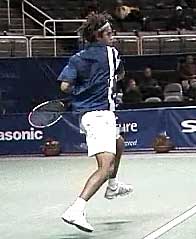
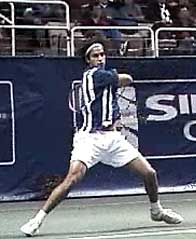
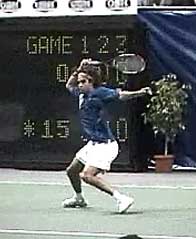
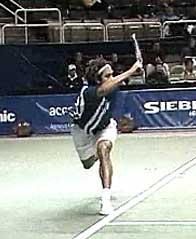
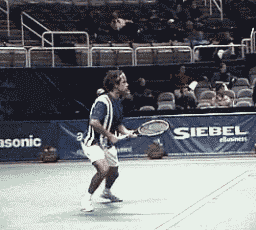
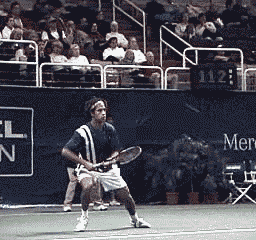
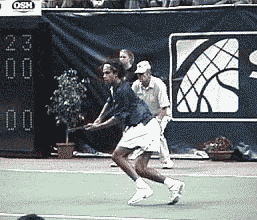
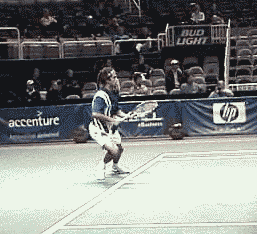
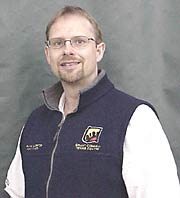 Wayne Elderton
Wayne Elderton